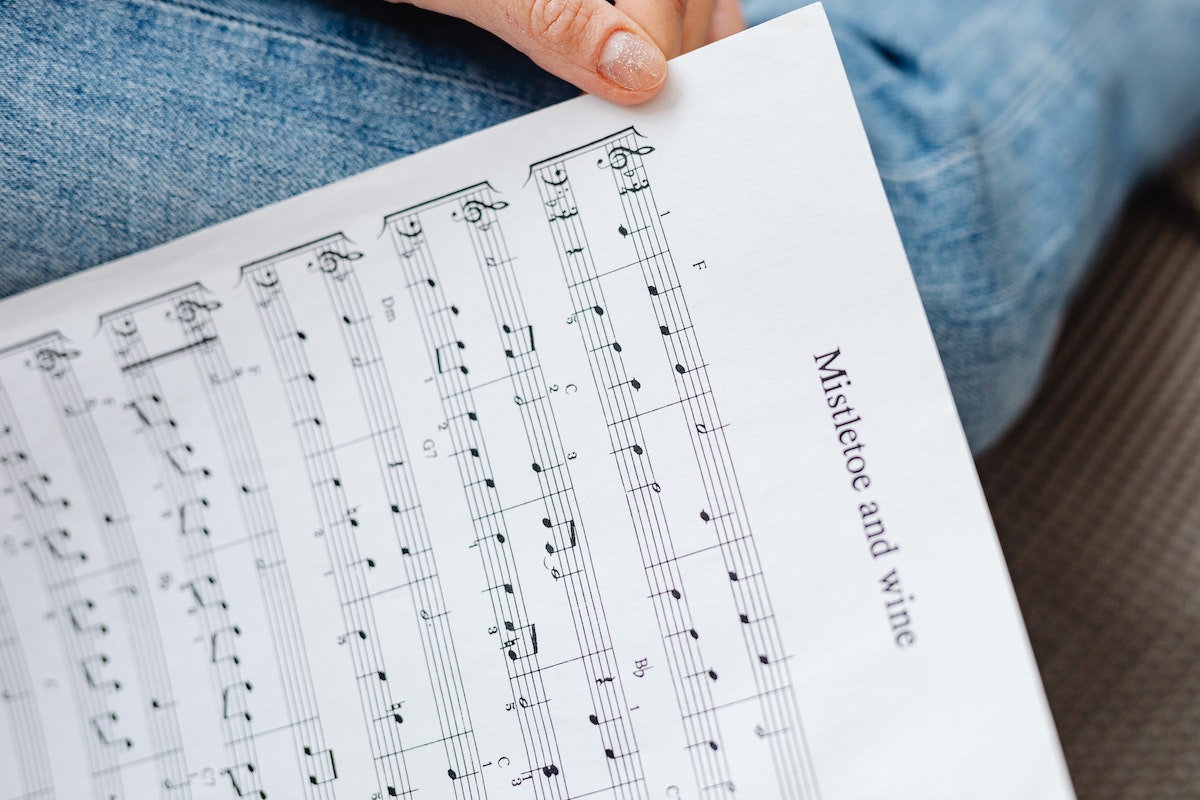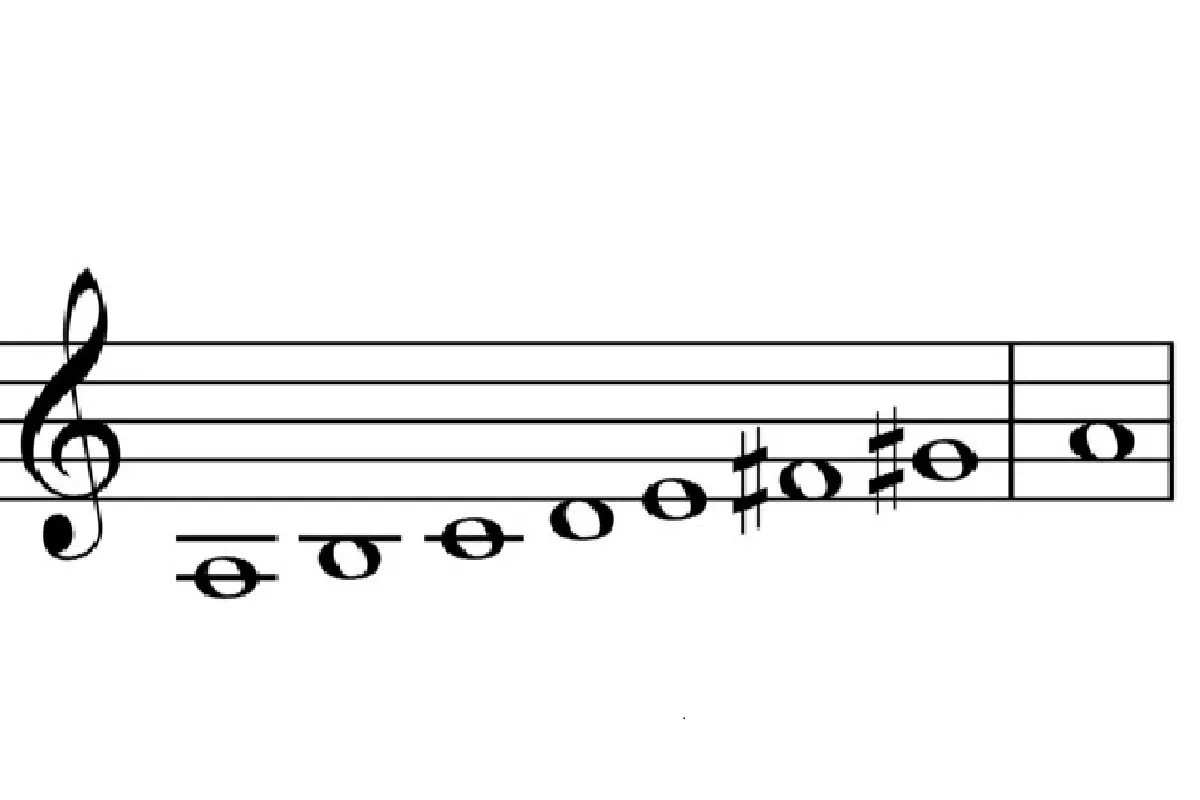Ever wondered what gives a minor scale its captivating and emotional sound? The minor scale gives music its moody and emotional touch, contrasting the cheerful vibes of the major scale. Ever wondered what makes a minor scale distinct? Let’s dive into the definition of a minor scale and unravel its musical magic.
How is a minor scale defined? A minor scale is characterized by a specific pattern of intervals that creates a unique mood, often described as melancholic or mysterious. It differs from a major scale primarily in the third scale degree, which is a half step lower, giving it a distinct tonality.
What is a minor scale?
A minor scale is a musical scale that evokes a distinct mood and tonality. It consists of seven different notes that span an octave. The specific pattern of intervals between these notes determines whether a scale is major or minor. In the case of a minor scale, the pattern typically follows this sequence: whole step, half step, whole step, whole step, half step, whole step, whole step.

AKAI Professional MPK Mini MK3

AKAI Professional MPK Mini MK3
What is the difference between major and minor scales?
Major scales and minor scales may sound similar, but they have distinct differences that affect their overall mood and character. The major difference between major and minor scales lies in their third scale degree. On a major scale, this degree is a major third, creating a bright, cheerful, and optimistic sound. On the other hand, a minor scale features a minor third as its third degree, giving it a more subdued, introspective, and sometimes even sorrowful quality.
Major scales and their relative minor scales share the same key signature, meaning they use the same set of notes. For example, the C major scale and the A minor scale have identical notes, but their tonal centers differ. This relationship allows musicians to explore different tonalities and harmonic possibilities within a shared set of notes.
What are the types of minor scales?
Did you know that there isn’t just one type of minor scale? Let’s explore the three main types and discover the unique sounds they offer.
1. The Natural Minor Scale
The natural minor scale, also known as the Aeolian mode, is the default and most common minor scale. Its pattern of intervals aligns with the notes found in the major scale’s sixth degree. The natural minor scale evokes a range of emotions, often associated with introspection, sadness, or mystery. It’s widely used across different musical genres, including classical, rock, blues, and more. Here’s what makes it distinct:
- Pattern: Whole step, half step, whole step, whole step, half step, whole step, whole step.
- Character: The natural minor scale delivers a classic, introspective, and melancholic sound. It’s a go-to choice for creating emotional ballads or expressing a sense of longing.
2. The Harmonic Minor Scale
The harmonic minor scale introduces an intriguing twist to the minor tonality.
- Pattern: Whole step, half step, whole step, whole step, half step, augmented second, half step.
- Character: The raised seventh degree in the harmonic minor scale creates tension and adds a unique Eastern or Middle Eastern vibe to your compositions. It’s often employed in various genres, including jazz, flamenco, and metal.

3. The Melodic Minor Scale
The melodic minor scale offers distinct variations when ascending and descending.
- Ascending Pattern: Whole step, half step, whole step, whole step, whole step, whole step, half step.
- Descending Pattern: Mirror image of the natural minor scale.
- Character: The melodic minor scale showcases versatility by assuming major tonalities while ascending and returning to a minor sound when descending. This duality allows for expressive melodies and provides an avenue for musical exploration.
To make the most of your minor scale adventures, keep these dos and don’ts in mind:
| Dos | Don’ts |
|---|---|
| Experiment with different minor scales and their variations. | Don’t limit yourself to only major scales or a single type of minor scale. |
| Embrace the emotional depth of minor scales to convey specific moods. | Avoid overusing minor scales, as it may result in a monotonous or overly dark sound. |
| Combine minor scales with other musical elements to create unique compositions. | Don’t neglect the importance of context—consider the overall musical context when choosing minor scales. |
| Explore different genres and musical styles to see how minor scales are utilized. | Avoid disregarding major scales entirely—incorporate both major and minor tonalities for a well-rounded musical palette. |
How do solfège syllables and scale-degree names differ in major and minor scales?
The minor scale’s solfège syllables and scale-degree names share similarities with those of the major scale, but they aren’t identical. In the provided example below, the three minor scale variations are detailed, highlighting consistent scale degrees with the major scale. However, the solfège syllables differ to mirror the minor scale’s unique sequence of steps.
For the natural minor version, we observe changes in the solfège syllables: mi becomes me (pronounced “may”), la becomes le (pronounced “lay”), and ti becomes te (pronounced “tay”). Singing or playing this variant reveals a different kind of ending compared to the major scale. The major scale’s closure is influenced by the half step rise from ti to do.
The harmonic minor version modifies mi to me and la to le, but keeps ti. This inclusion of ti restores the sense of closure missing in the natural minor.
Here’s a table that lists the scale-degree names, scale-degree numbers, and solfège syllables for the natural minor scale:
| Scale-Degree Number | Scale-Degree Name | Solfège Syllable (Minor) |
|---|---|---|
| 1 | Tonic | Do |
| 2 | Supertonic | Re |
| 3 | Mediant | Me (or Mi♭) |
| 4 | Subdominant | Fa |
| 5 | Dominant | Sol |
| 6 | Submediant | Le (or La♭) |
| 7 | Subtonic | Te (or Ti♭) |
For the harmonic and melodic minor scales, the 7th and 6th degrees are raised when ascending in the melodic minor:
Harmonic Minor:
- The 7th degree is raised, making it Ti instead of Te.
Melodic Minor (ascending):
- The 6th and 7th degrees are raised, making them La and Ti respectively.
Melodic Minor (descending):
- The scale reverts to the natural minor form, using Le and Te for the 6th and 7th degrees respectively.
If you want even more great tips and information, check out the video below.
Frequently Asked Questions (FAQ)
As we wrap up this blog post on understanding minor scales, let’s address some frequently asked questions to ensure we cover all the bases.
Can I use a minor scale in any genre of music?
Minor scales can be utilized in various genres, including rock, blues, jazz, and electronic music, among others. While they are versatile, it’s important to consider the mood and emotional impact you want to convey in your composition.
Can I mix major and minor scales in the same song?
Absolutely! Mixing major and minor scales within a song can create dynamic contrasts and add complexity to your music. The juxtaposition of these scales can enhance the emotional journey for the listener.
How can I add variety to my minor scale compositions?
To add variety to your minor scale compositions, you can experiment with different modes, chord progressions, rhythmic patterns, and instrumental arrangements. Don’t be afraid to explore and think outside the box to keep your music fresh and engaging.
Conclusion
And that’s a wrap! We’ve taken a deep dive into the fascinating world of minor scales, uncovering their structure, applications, and how they can enrich your music. Remember, when it comes to minor scales, the possibilities are endless. So, embrace their emotive power and let your creativity soar!
Did I cover everything you wanted to know? Let me know in the comments section below. I read and reply to every comment. If you found this article helpful, share it with a friend, and check out my full blog for more tips and tricks on exploring the musical universe. Thanks for reading, and remember to keep rocking those minor scales!
Key Takeaways
This article covered the topic of minor scales and their significance in music production and composition. Here are some key takeaways:
- Minor scales add depth and emotional intensity to music, allowing for a wide range of expression.
- Understanding the differences between major and minor scales is essential for crafting melodies and harmonies that evoke specific moods.
- The natural minor, harmonic minor, and melodic minor scales offer distinct characteristics and applications.
- The minor pentatonic scale is a versatile tool for creating captivating melodies and improvising in various genres.
- Incorporating minor scales into your home recording studio or music production can elevate the emotional impact and captivate listeners.















